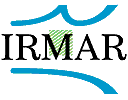Outline
Generally speaking, the statistical methods connected with parametric modelling are adressed by the researchers of our group. Despite the abundant literature on parametric approaches, for a long time and for various applications, novel solutions are yet required to face some concrete problems encountered by the members of our group in their privileged fields of applications: life sciences, agricultural statistics, sensory analysis, environmental sciences. Most often, our works aim on the one hand to bring specific answers accounting for contextual restrictions and, on the other hand, to generalize our approaches to widen its potential applications. This latter objective can lead to more fundamental research activities.
Taking place before the collecting of the data in the statistical approaches, methods of experimental planning are especially crucial for life scientists or sensory analysts. Our group works on the way to derive optimal designs in sensory analysis accounting for some effects specific to that context. Involving the experimental costs in the planning of experiments also motivates some of our activities. More precisely, some works are in process on optimal designs when some auxiliary information is partially available. More generally, this leads to more general studies on optimal inferential strategies in the presence of incomplete observations.
Another issue adressed by some of us is the handling of multicollinearity between predictors in regression models, the derivations of latent predictors and the estimation of dimensionnality. Some recent works have led to novel results on PLS. Furthermore, random matrix theory arguments have been used to reduce bias of an estimation of the dimension of a distance-based model for interaction between homologous factors.
Finally, some of our works focus on extensions of including of generalized linear models by non-linear or random components. These approaches aim at modelling time effects in longitudinal studies, spatial or multiplicative effects in models for interaction between factors. This have led to generalized biadditive modelling strategies.
Workgroup
Members : D. Causeur, S. Deguen, P. Druilhet, A. Hamon, F. Husson, A. Levenu, A. Mom, J. Pagès.
Contact person : D. Causeur.
Workgoup's meeting : every first thursday of a month in Agrocampus Rennes.
